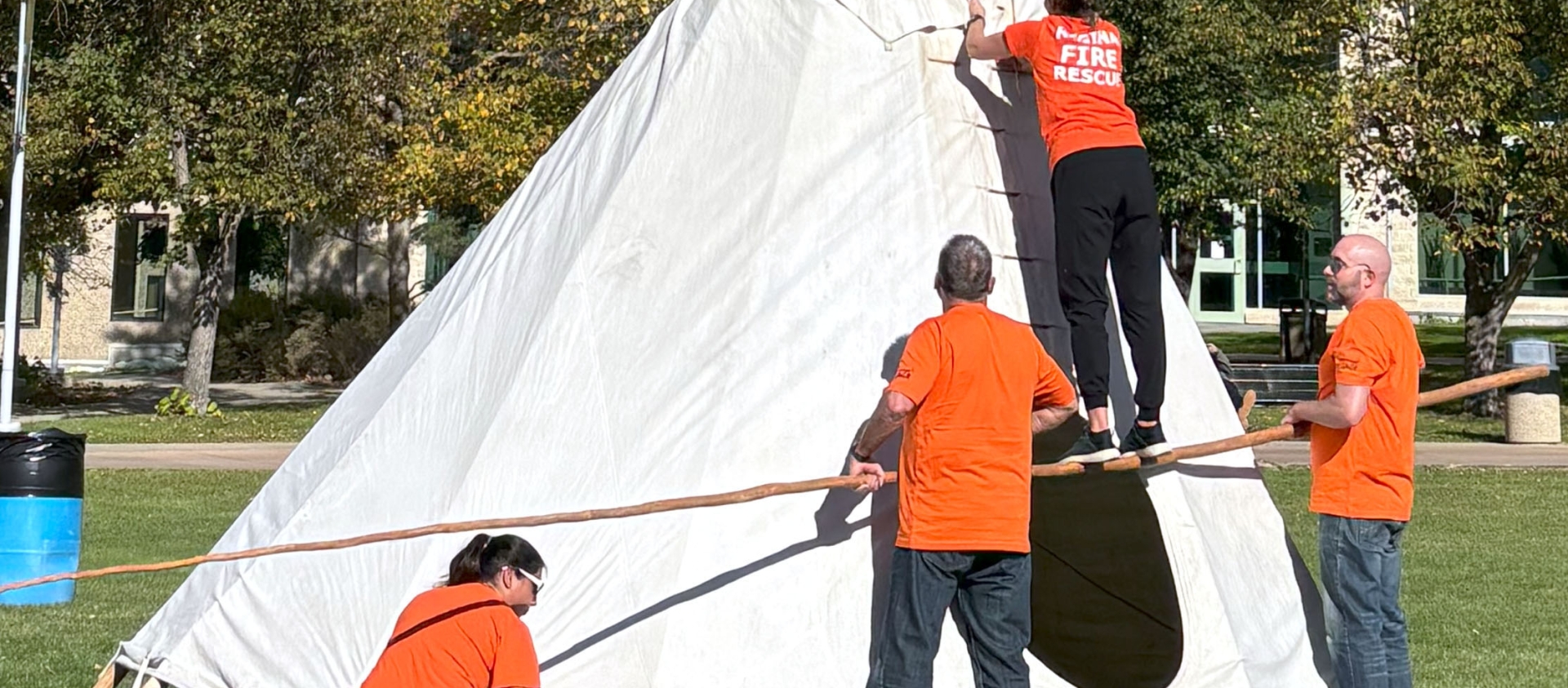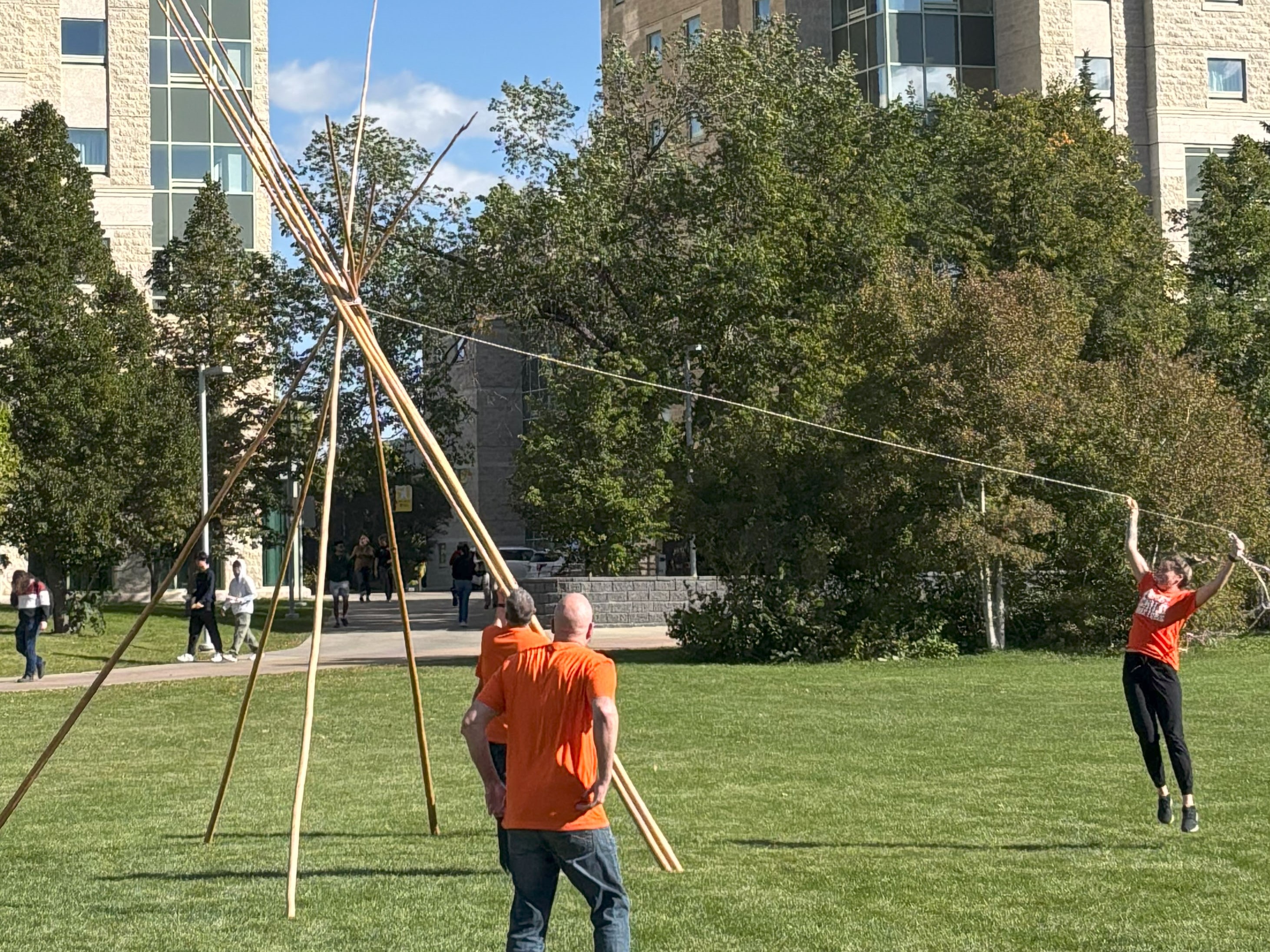Tipi-raising competition delivers lessons about work and life

Raising a tipi is about more than building a shelter. This was one of many lessons learned by teams in the Glen Anaquod Tipi Raising Competition.
Four teams from SaskEnergy joined others from the community at the University of Regina in late September to take part in the annual event.
The event was started in 2008 by Glen Anaquod, an Elder from Muscowpetung First Nation, to bring cultures together and share teachings in a kind and loving way.
“It is a competition. But the day is about participating in Indigenous culture, team building and most important, having fun,” says Sharla Sparvier, chair of SaskEnergy’s SAGE committee — an Indigenous employee-led network.
With 20 minutes to build their tipis, each team was provided several wooden poles, pegs, canvas, rope and duct tape.
“The experience was great,” says Darcy Fargo, member of one of SaskEnergy’s teams and a first-time participant. “It was way more difficult than anticipated and the time went by very fast, but our team was so proud that we finished.”
While raising the tipi within that time limit was important, it was not what was most critical.
Gaylene Anaquod, Glen's daughter, was on hand to remind the crowd that the competition wasn’t to be taken too seriously. The process involves making mistakes and learning to persist, adapt and support one another, she said. All were encouraged to find humour in their interactions and efforts.
Teams relied on communication and cooperation as they raised their poles, ensuring a stable base for their canvas. Teams who had to start over after their poles tumbled to the ground learned acceptance. Navigating the tip of a pole several feet long into the small pocket of a smoke flap at the tipi's peak required patience and dedication.
SaskEnergy teams were fortunate enough to start their tipi raising experience the day before the event, when, Elder Harry Francis of Piapot First Nation visited SaskEnergy Place to share the history and traditions involved in raising tipis.
Team member learned that each pole of a tipi represents a virtue, such as respect, humility, hope, love, strength, sharing, and cleanliness. They also reviwed proper conduct inside a tipi, which is viewed as a sacred structure that involves traditions and teachings that remain important today, including how to co-exist and work well with one another to achieve a common goal.
“I had the time of my life with my team. What a wonderful experience to be blessed with,” says SaskEnergy participant Jennifer Ladner.




